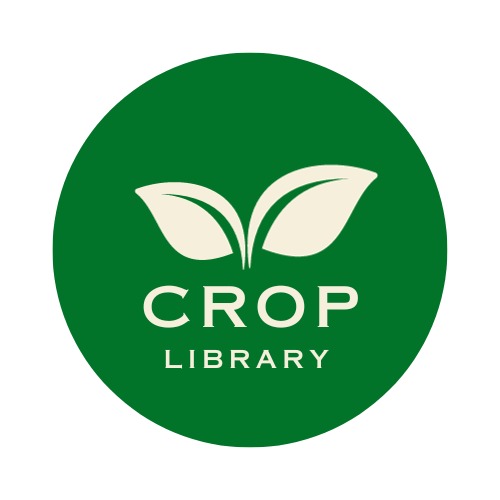Secondary Metabolites
Secondary metabolites are unique chemical compounds produced in specific plant cells through specialized metabolic pathways. Unlike primary metabolites, which are essential for basic life-sustaining processes such as respiration and photosynthesis, secondary metabolites do not directly contribute to these fundamental functions. Instead, they play critical roles in the ecological and chemical interactions of plants with their environment. These compounds are pivotal for the survival and adaptation of plants.
Their functions include:
Pigmentation
Secondary metabolites contribute to the color of flowers, fruits, and leaves, aiding in pollination and seed dispersal.
Allelopathy
These compounds mediate chemical interactions between plants, influencing the growth and development of neighboring plants.
Repellents
They protect plants by deterring herbivores and pests.
Attractants
Secondary metabolites attract beneficial organisms such as pollinators and seed dispersers.
Poisons
Some compounds serve as toxic agents to ward off predators and pathogens.
Hormones
They act as regulators of plant growth and development.
Storage Compounds
Secondary metabolites store energy or essential nutrients for later use by the plant.
Related Article: Catabolic metabolism in plants
Terpenes: The Secondary Metabolites
Terpenes are a diverse group of natural compounds made up of isoprene units, each containing five carbon atoms. These metabolites are involved in various ecological functions and are synthesized via two main pathways:
Mevalonate Pathway
- Found in eukaryotes.
- It takes place in the cytosol and peroxisomes.
Methylerythritol Phosphate (MEP) Pathway
- Present in higher plants, algae, and eubacteria but absent in fungi and animals.
- Discovered in the 1990s.
- Occurs in plastids and is key in the biosynthesis of carotenoids (tetraterpenes).
Classification of Terpenes
Terpenes play vital roles in plant ecology, functioning as attractants, repellents, and structural components, and they have extensive applications in agriculture, medicine, and industry.
Terpenes are categorized based on the number of isoprene units they contain:
Monoterpenes (C10)
- Examples: Limonene, pinene.
- Found in:
- Lemon oil: Limonene (90%) in the peel, used as a flavoring agent.
- Mint: Mentha arvensis, Mentha piperita (Lamiaceae).
- Spruce: Produces α-pinene (Picea abies, Pinaceae).
- Fennel: Foeniculum vulgare (Apiaceae).
Sesquiterpenes (C15)
- Examples: Farnesol, abscisic acid (ABA).
- Found in:
- Bitter orange: Citrus aurantium (Rutaceae).
Diterpenes (C20)
- Examples: Phytol (a component of chlorophyll), gibberellins (plant growth regulators).
Triterpenes (C30)
- Examples: Steroids, cardiac glycosides.
- Found in:
- Foxglove: Digitalis purpurea (Scrophulariaceae), used to produce cardiac glycosides.
Tetraterpenes (C40)
- Examples: Lycopene, β-carotene, lutein, zeaxanthin, violaxanthin, fucoxanthin.
- Found in:
- Tomato: Lycopersicon esculentum (source of lycopene).
- Rice: Oryza sativa.
Golden Rice
- Engineered rice varieties with enhanced β-carotene levels to combat vitamin A deficiency.
- Its adoption faces challenges due to social and technological concerns.
Polyterpenes
- Examples: Caoutchouc (natural rubber), gutta-percha.
- Found in:
- Para rubber tree: Hevea brasiliensis (Euphorbiaceae).
- Gutta-percha tree: Palaquium gutta (Sapotaceae).
Phenolic Compounds :The Secondary Metabolites
Phenolic compounds are secondary metabolites distinguished by their aromatic ring structures. These compounds are abundant in plants and play a variety of ecological and physiological roles. They are crucial for plant defense mechanisms, pigmentation, and interactions within ecosystems. Additionally, phenolic compounds are highly valued in agriculture, the food industry, and medicine for their antioxidant properties and their structural and biochemical functions.
Types of Phenolic Compounds
Simple phenylpropanoids
Include compounds like limonene (a terpene with aromatic properties), caffeic acid (an antioxidant), and vanillin (a flavoring agent).
Flavonoids and anthocyanidins
These are plant pigments with antioxidant properties.
Tannins
Polyphenolic compounds known for their role in plant defense and their astringent properties.
Lignin
A phenolic polymer that provides structural rigidity to plants.
Auxins
Phenolic-based plant hormones that regulate growth and development.
Biosynthetic Pathways
Shikimic Acid Pathway
- This pathway involves the condensation of two intermediates: phosphoenolpyruvate (C3) and erythrose 4-phosphate (C4).
- It produces aromatic amino acids such as tyrosine and phenylalanine, which are precursors for many phenolic compounds.
Phenylpropanoid Pathway
- This pathway synthesizes complex phenolic compounds, including flavones, anthocyanins, tannins, and lignin.
- Example sources:
- Coffee (Coffea arabica, Rubiaceae): Known for its rich phenolic content.
- Vanilla (Vanilla planifolia, Orchidaceae): Contains vanillin as its primary phenolic compound.
Functions of Phenolic Compounds
Allelopathy
- Phenolic compounds are released by plants into the environment to influence the growth, survival, and reproduction of neighboring plants, either positively or negatively.
Anthocyanins
- Act as pigments, giving flowers, fruits, and leaves vibrant colors.
- Provide antioxidant properties and protect plants from UV radiation.
- Exhibit pH-dependent color shifts, changing hues between red and blue.
- Lignin
- A phenolic polymer that strengthens cell walls and provides rigidity to woody plants, enabling them to withstand mechanical stress.
Examples of Phenolic Compounds
- Anthocyanins: Found in oak trees (Quercus spp., Fagaceae), contributing to the red, purple, and blue pigmentation in plant tissues.
- Lignin: Abundant in hardwood species, where it enhances structural integrity and defense against pathogens.
Alkaloids: The Secondary Metabolites
Alkaloids are organic compounds characterized by their nitrogen-containing heterocyclic structures and basic properties. These naturally occurring substances are found in various plants and are known for their physiological and pharmacological effects. Common examples include nicotine, morphine, and coniine.
Classes of Alkaloids
Pyrrolidine Alkaloids
Example: Nicotine, a stimulant alkaloid found in tobacco (Nicotiana tabacum), which belongs to the Solanaceae family.
Tropane Alkaloids
Examples:
- Cocaine, derived from the coca plant (Erythroxylum coca) of the Erythroxylaceae family.
- Morphine, obtained from the opium poppy (Papaver somniferum) of the Papaveraceae family.
Piperidine Alkaloids
Example: Coniine, a toxic compound found in hemlock (Conium maculatum), which belongs to the Apiaceae family.
These classes of alkaloids are significant for their diverse biological activities and applications in medicine, agriculture, and industry.



Pingback: Signal transduction in Plant -